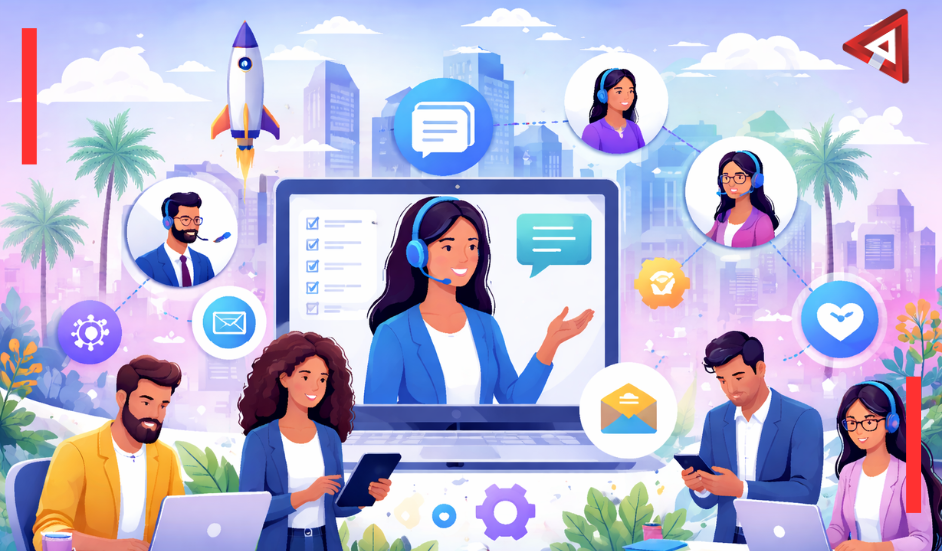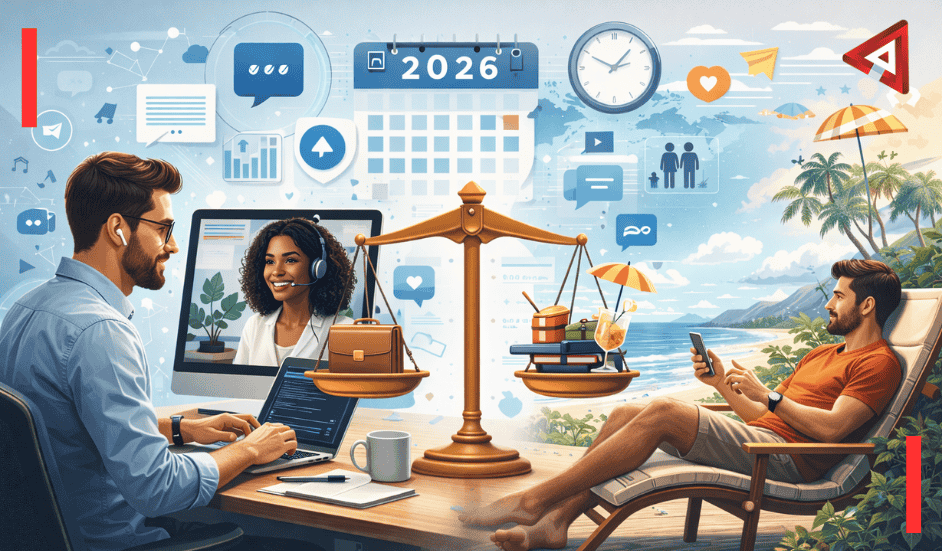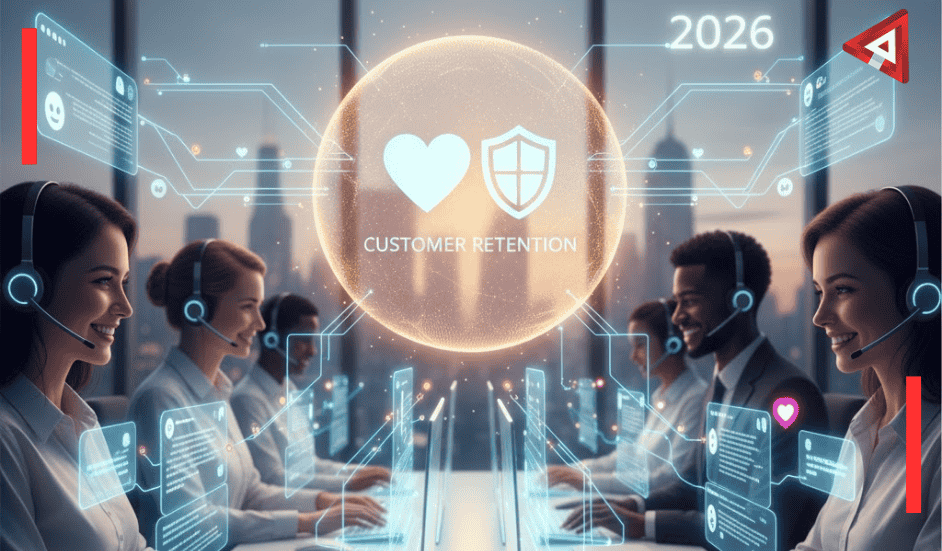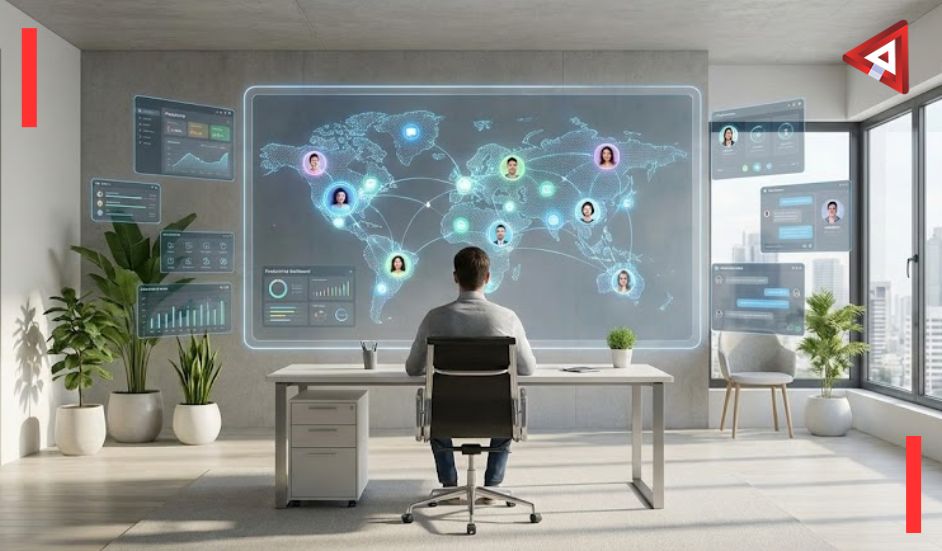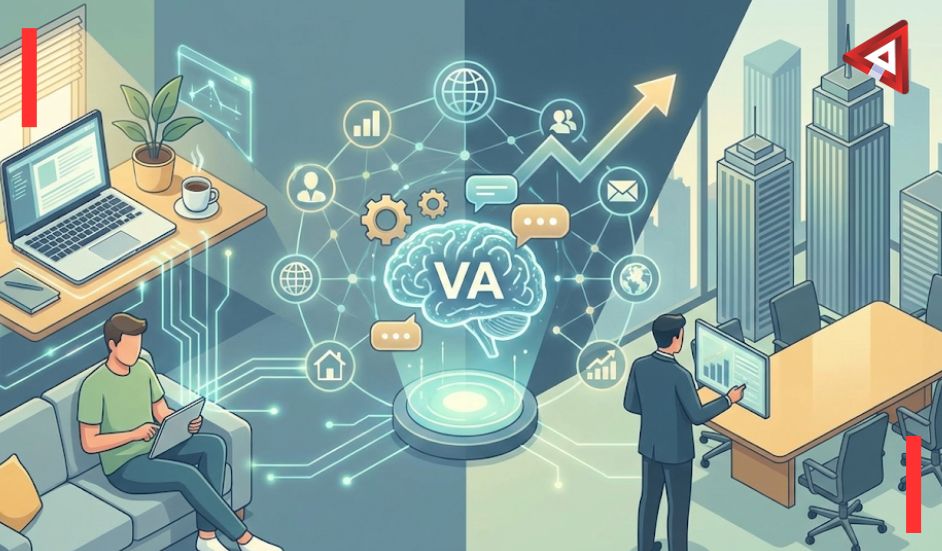The distinction between Technical Support and Customer Service is often blurred, with many mistakenly using these terms interchangeably. However, a closer examination reveals significant differences that can shape support strategies and enhance overall customer satisfaction. Customer service encompasses a broader spectrum, focusing on the entire customer experience and interactions, while technical support is a specialized subset dealing with technical issues related to products or services. Businesses must discern these nuances—discussed below to optimize their support approaches and retain customers effectively.
What is customer service?
Customer service is a comprehensive set of practices aimed at improving interactions between customers and a business throughout the entire purchasing process, from pre-purchase to post-purchase. This umbrella term covers every touchpoint between customers and the business, emphasizing the creation of a positive and seamless experience. Customer service representatives are trained to provide assistance, guidance, and support, ensuring customers feel valued at every stage.
What is technical support?
In contrast, technical support is a specific type of customer service that addresses the technical aspects of products or services. It involves assisting users who encounter issues with hardware or software, requiring a higher level of skill and familiarity with the product. Unlike general customer service, tech support for business is provided selectively to those customers who explicitly request assistance for technical problems. This distinction reflects the specialized nature of technical support, where representatives delve into the intricacies of products to provide targeted solutions.
Tech Support vs Customer Service
Approaches to Customers:
The distinct approaches of technical support and customer service become apparent when considering the nature of customer interactions. Each approach is tailored to the unique needs and expectations of the customer, reflecting the specific challenges they face.
- Technical Support Approach: Technical support adopts a problem-centric approach, aiming to resolve issues promptly and efficiently. When customers reach out to technical support, they typically encounter challenges related to the functionality or operation of a product. Technical support virtual assistants are trained to listen attentively, identify the root cause of the problem, and provide targeted solutions.
The emphasis in technical support is on fixing the immediate issue. Representatives focus on understanding the symptoms, attempting to reproduce the problem, and offering solutions that address the technical intricacies. This approach requires a deep understanding of the product or service, technical expertise, and the ability to guide customers through troubleshooting processes.
In essence, technical support is about actively listening to the customer’s problem and swiftly delivering a resolution. The goal is to restore the product to its optimal functioning state, ensuring that customers can use it without disruptions.
- Customer Service Approach: In contrast, customer service takes a broader, more customer-centric approach. Instead of primarily focusing on issue resolution, customer service representatives aim to understand the customer’s overall goals and aspirations. This involves empathizing with the customer, putting themselves in the customer’s “shoes,” and comprehending the broader context of the customer’s needs.
Customer service representatives listen not just to fix immediate problems but also to provide recommendations and guidance that align with the customer’s objectives. This could involve suggesting complementary products or services, offering personalized tips, or guiding the customer toward more effective and efficient ways of using the product.
The customer service approach is rooted in building relationships and ensuring a positive overall experience. By understanding the customer’s journey and long-term goals, customer service representatives contribute to customer satisfaction beyond the resolution of immediate concerns. This approach is especially crucial in situations where the customer seeks advice, wants to explore additional features, or is looking for ways to enhance their overall experience with the product or service.
- Integration of Approaches: While the approaches differ, there is an inherent connection between technical support and customer service. Technical support representatives, in addition to addressing technical issues, must also possess customer service skills. This integration ensures that even in the process of resolving technical problems, customers feel heard, valued, and understood.
Similarly, customer service teams benefit from a foundational understanding of the technical aspects of the products or services they support. This knowledge enables them to provide more informed recommendations and guidance, especially when customers express specific technical needs or preferences.
Ultimately, the harmonious integration of these approaches creates a comprehensive support strategy. Technical support addresses immediate technical challenges, while customer service contributes to the overall customer journey, fostering a relationship that extends beyond problem-solving.
Product Perspectives:
The distinction between technical support and customer service is also evident when considering the perspectives each takes regarding the products or services they are supporting. This involves examining how each addresses issues, provides solutions, and adds value to the customer’s experience from a product-oriented standpoint.
- Technical Support Perspective: Technical support delves into the intricate details of a product’s functionality, with a primary focus on problem resolution. When customers encounter technical glitches, errors, or malfunctions, technical support steps in to diagnose and rectify these issues. This perspective is akin to a meticulous examination of the inner workings of a product, dissecting the problem to identify its root cause.
Take, for instance, the “word processing example.” If a customer faces an error dialog box or issues with a malfunctioning plugin in their word processor, technical support excels at providing solutions. Their expertise allows them to navigate through the technical intricacies, offering step-by-step guidance to resolve the specific problem at hand.
However, technical support might face limitations when customers seek assistance with tasks that require a broader understanding of the product’s functionalities. For instance, inquiries related to advanced features or nuanced usage scenarios may fall outside the traditional scope of technical support.
- Customer Service Perspective: Customer service widens the lens to encompass the overall customer experience with the product. Instead of focusing solely on troubleshooting and error resolution, customer service looks at the product from a holistic perspective. This involves understanding the customer’s goals, preferences, and how the product fits into their broader needs.
Returning to the “word processing example,” if a customer seeks guidance on formatting a document in a specific style, such as APA format, technical support might find it challenging to provide a solution. This is where customer service steps in. Customer service representatives possess a more generalized understanding of the product’s features and can offer advice, recommendations, and creative solutions that go beyond the immediate technical issues.
The customer service perspective is not just about fixing problems; it’s about adding value to the customer’s experience. It means knowing not only how to resolve technical hiccups but also how to optimize the product’s usage based on the customer’s unique requirements.
More Nuances of Tech Support & Customer Service
Understanding the difference between technical support and customer service is vital for businesses aiming to deliver exceptional customer experiences. While customer service encompasses the entire customer journey, technical support zooms in on the intricacies of product functionality. Balancing the two is essential for overall customer satisfaction and retention.
In technical support, expertise is paramount. Technical support representatives possess a high level of skill and are trained to navigate the complexities of hardware and software products. When customers encounter technical issues, they seek assistance from knowledgeable technical support teams. This targeted support enhances the customer’s perception of the product and the brand as a whole.
Customer service, being a broader concept, extends its influence across all customer touchpoints. From the initial interaction to post-purchase support, customer service representatives play a crucial role in shaping the overall customer experience. Their ability to listen with empathy and offer tailored recommendations contributes to customer satisfaction and loyalty.
The common confusion between technical support and customer service arises from the fact that technical support representatives also require strong customer service skills. While technical expertise is crucial, the ability to empathize with customers and communicate effectively is equally important. This dual skill set ensures that technical support interactions not only resolve issues efficiently but also leave customers with a positive overall experience.
Customer service, as part of a company’s overall strategy, aims to guarantee smooth and pleasant interactions between customers and the business. It goes beyond issue resolution, focusing on creating a positive brand image and fostering long-term customer relationships. Every staff member who interacts with customers, including sales, support, cashiers, and marketers, contributes to the overarching customer service strategy.
Feeling unappreciated is identified as the primary reason customers switch products and services. This highlights the critical role of customer service in building and maintaining customer loyalty. Businesses must invest in comprehensive customer service training for all customer-facing roles to ensure consistent and positive interactions across the board.
Final Thoughts
In conclusion, while technical support and customer service share commonalities, their distinctions are crucial for delivering a holistic customer experience. Technical support excels in targeted issue resolution, leveraging specialized knowledge, and skills. On the other hand, customer service spans the entire customer journey, focusing on empathy, communication, and overall satisfaction. A harmonious integration of technical support within the broader framework of customer service is the key to a robust support strategy that fosters customer retention and loyalty.
Regardless of the size of the business you represent, if you’re considering hiring technical support virtual assistant or customer service representative, VoxtenD is here to help. Our suite of tech services covers all aspects of tech support, customer-side service, and beyond, ensuring that your business gets the help it needs, no matter the size or needs of your business. With round-the-clock availability, VoxtenD is your partner in achieving business success. Contact us today to explore how our services can benefit your business.



